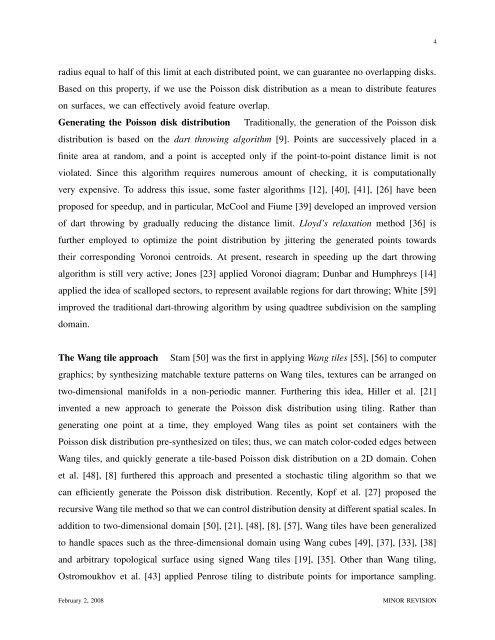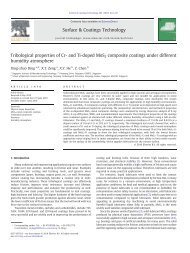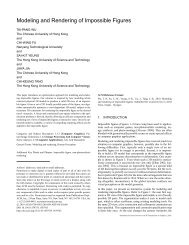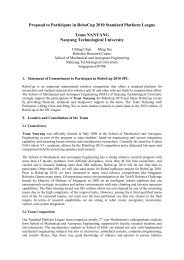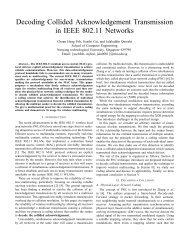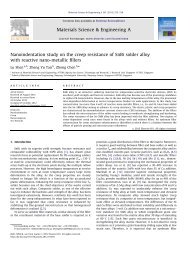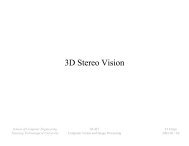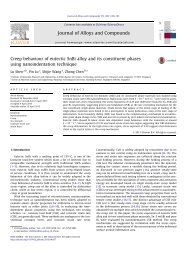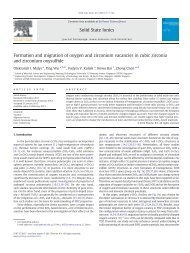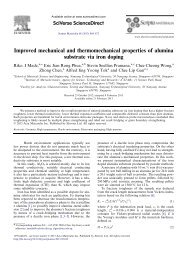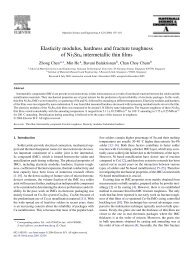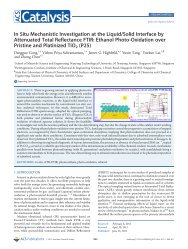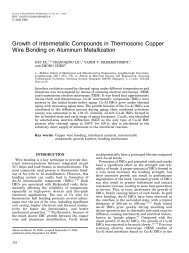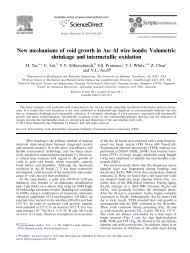ptdist - Nanyang Technological University
ptdist - Nanyang Technological University
ptdist - Nanyang Technological University
You also want an ePaper? Increase the reach of your titles
YUMPU automatically turns print PDFs into web optimized ePapers that Google loves.
adius equal to half of this limit at each distributed point, we can guarantee no overlapping disks.<br />
Based on this property, if we use the Poisson disk distribution as a mean to distribute features<br />
on surfaces, we can effectively avoid feature overlap.<br />
Generating the Poisson disk distribution Traditionally, the generation of the Poisson disk<br />
distribution is based on the dart throwing algorithm [9]. Points are successively placed in a<br />
finite area at random, and a point is accepted only if the point-to-point distance limit is not<br />
violated. Since this algorithm requires numerous amount of checking, it is computationally<br />
very expensive. To address this issue, some faster algorithms [12], [40], [41], [26] have been<br />
proposed for speedup, and in particular, McCool and Fiume [39] developed an improved version<br />
of dart throwing by gradually reducing the distance limit. Lloyd’s relaxation method [36] is<br />
further employed to optimize the point distribution by jittering the generated points towards<br />
their corresponding Voronoi centroids. At present, research in speeding up the dart throwing<br />
algorithm is still very active; Jones [23] applied Voronoi diagram; Dunbar and Humphreys [14]<br />
applied the idea of scalloped sectors, to represent available regions for dart throwing; White [59]<br />
improved the traditional dart-throwing algorithm by using quadtree subdivision on the sampling<br />
domain.<br />
The Wang tile approach Stam [50] was the first in applying Wang tiles [55], [56] to computer<br />
graphics; by synthesizing matchable texture patterns on Wang tiles, textures can be arranged on<br />
two-dimensional manifolds in a non-periodic manner. Furthering this idea, Hiller et al. [21]<br />
invented a new approach to generate the Poisson disk distribution using tiling. Rather than<br />
generating one point at a time, they employed Wang tiles as point set containers with the<br />
Poisson disk distribution pre-synthesized on tiles; thus, we can match color-coded edges between<br />
Wang tiles, and quickly generate a tile-based Poisson disk distribution on a 2D domain. Cohen<br />
et al. [48], [8] furthered this approach and presented a stochastic tiling algorithm so that we<br />
can efficiently generate the Poisson disk distribution. Recently, Kopf et al. [27] proposed the<br />
recursive Wang tile method so that we can control distribution density at different spatial scales. In<br />
addition to two-dimensional domain [50], [21], [48], [8], [57], Wang tiles have been generalized<br />
to handle spaces such as the three-dimensional domain using Wang cubes [49], [37], [33], [38]<br />
and arbitrary topological surface using signed Wang tiles [19], [35]. Other than Wang tiling,<br />
Ostromoukhov et al. [43] applied Penrose tiling to distribute points for importance sampling.<br />
February 2, 2008 MINOR REVISION<br />
4


